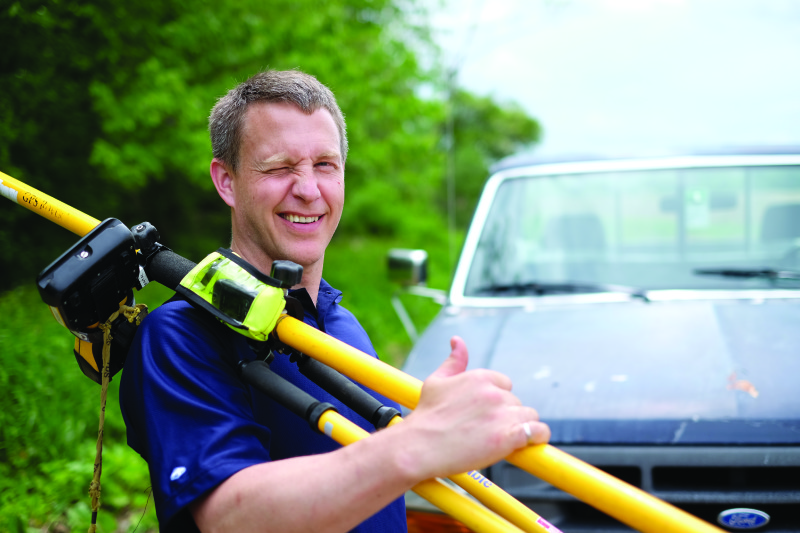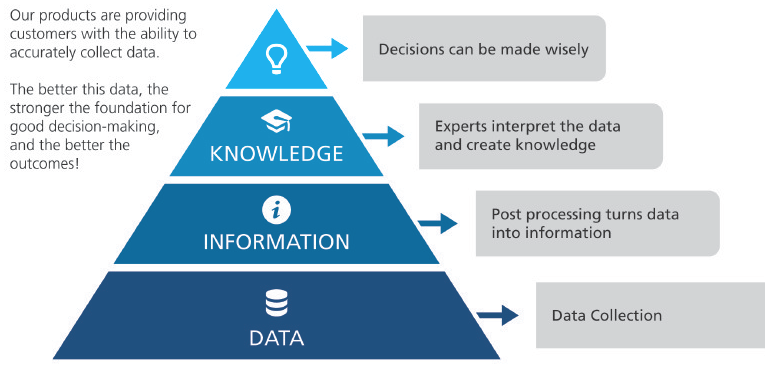How to explain the value of UAS to geospatial professionals.
I’m the business development director at microdrones, where one of my goals is to help customers–who sell services like aerial mapping, surveying, infrastructure inspection, and monitoring precision agriculture–communicate to their potential clients the value of using UAS. This can be tricky in such a high-tech field.
In fact, the biggest mistake I see salespeople and service providers make when speaking with a prospect about using drones is getting too technical, too early. That’s why my #1 rule of talking to customers about drones is:
Don’t Talk to Them about Equipment
“Don’t talk about the drones” probably seems like the last thing you’d expect to hear from a guy who works for a drone company. And don’t get me wrong: you should eventually explain why using an advanced UAS will produce better results.
However, before you talk to clients about any of the features and technologies that will help them achieve their goals, it is important to help the prospect see the true value of using a highly accurate UAV for their application. I think this can be a challenge to explain, especially for someone (like you) who works very closely with and knows a ton about the equipment.
For me, thinking about the value in terms of the DIKO Organizational Intelligence pyramid helps. Some of you may already know what the DIKO pyramid is, but for those of you who don’t, it’s on page 39.
Good Data Is the Foundation of Good Decision Making
What does this pyramid have to do with using a drone? I think it simply communicates the value.
Let’s start at the bottom level of the pyramid: data, the foundation of organizational intelligence. If we’re going to make intelligent decisions as an organization, then we need to base those decisions on good data.
But our data is only as good as our methods of data collection. See where I’m going with this?
A top-quality UAV will provide you with the ability to collect data with an extremely high level of accuracy. The better the data, the stronger the foundation for good decision making, and the better the outcome. Or, simply: the exceptional data you will be able to provide will increase your clients’ likelihood of succeeding in their goals. And isn’t that what they’re paying you for?
Garbage In, Garbage Out
To explain the importance of good data, you could show your prospects the DIKO pyramid. It’s a good visual representation of why it’s worth it to invest in methods that achieve accuracy.
Another, probably easier, way to explain it is with one of my favorite related phrases, “garbage in, garbage out.” If they base their decision making on inaccurate data, they will make bad choices and have bad results.
“Garbage in, garbage out” is an explanation of value that comes with a warning of the risks involved in cutting corners and using an inferior UAS. It’s also memorable and succinct.
Start Sales Conversations with a Question
Okay, I admit it. “Garbage in, garbage out” may be good, but we’re clearly not going to start a conversation with that one, especially when someone calls up and says, “I’m looking for services like yours.” And, as I described earlier, we’re also not going to launch into an explanation of our equipment just yet.
What’s the best approach to starting a sales conversation? I recommend asking the prospect, “What are you trying to do?”
It’s as simple as that. To be able to truly understand your prospect’s goals and how technologies like direct georeferencing can help them get there, you need them to talk you through the specific logistics that will come into play. When you know their desired outcome and the challenges they face, you can explain the value of using the UAV in terms they will understand that apply directly to their situation.
Then, when you communicate the need for good data, you can do so using the actual application they are considering as an example. This is the surest way to know that, when they leave the conversation, they will understand the difference between choosing you and choosing a lower-priced competitor.
Playing out the Pyramid
An example of a successful outcome founded on precise data collection is our recent experience with a government conservation agency. They approached us because they needed accurate measurements of a massive dam that was too dilapidated for surveyors to safely access. Here is a list of how our DIKO pyramid played out.
Data: Our md4-1000 UAV flew over the dam, collecting highly accurate data.
Information: The data collected by the UAV was post-processed into a format that was useful for human analysis. The accuracy of the processed data (orthoimage/surface model) was 1.4 cm (X,Y) and 2.2 cm (Z). (This is the step that turns data into information).
Knowledge: Using this precise information, engineers were able to get a clear picture of the condition and measurements of the dam.
Organizational Intelligence: The engineers were able to use this knowledge to create plans for dam restoration, which were then successfully completed.

Mike Hogan is in charge of identifying new business opportunities for micro-drones and helping clients be more succesful
It’s about Solutions
As a UAV company, prospects come to us with their greatest challenges and loftiest ambitions. Our job is to find solutions to overcome and achieve them, whether that’s through existing or entirely new technology. To be competitive, you, too, need to adopt a solutions-based approach. Not only will it help you gain more business, but it will also help ensure you’re a leader in your field at the forefront of innovation.
To be successful, we need to identify market needs and either figure out ways to meet them with current technology or invent something new to handle those needs.
Good sales conversations are the way that we begin these processes.



